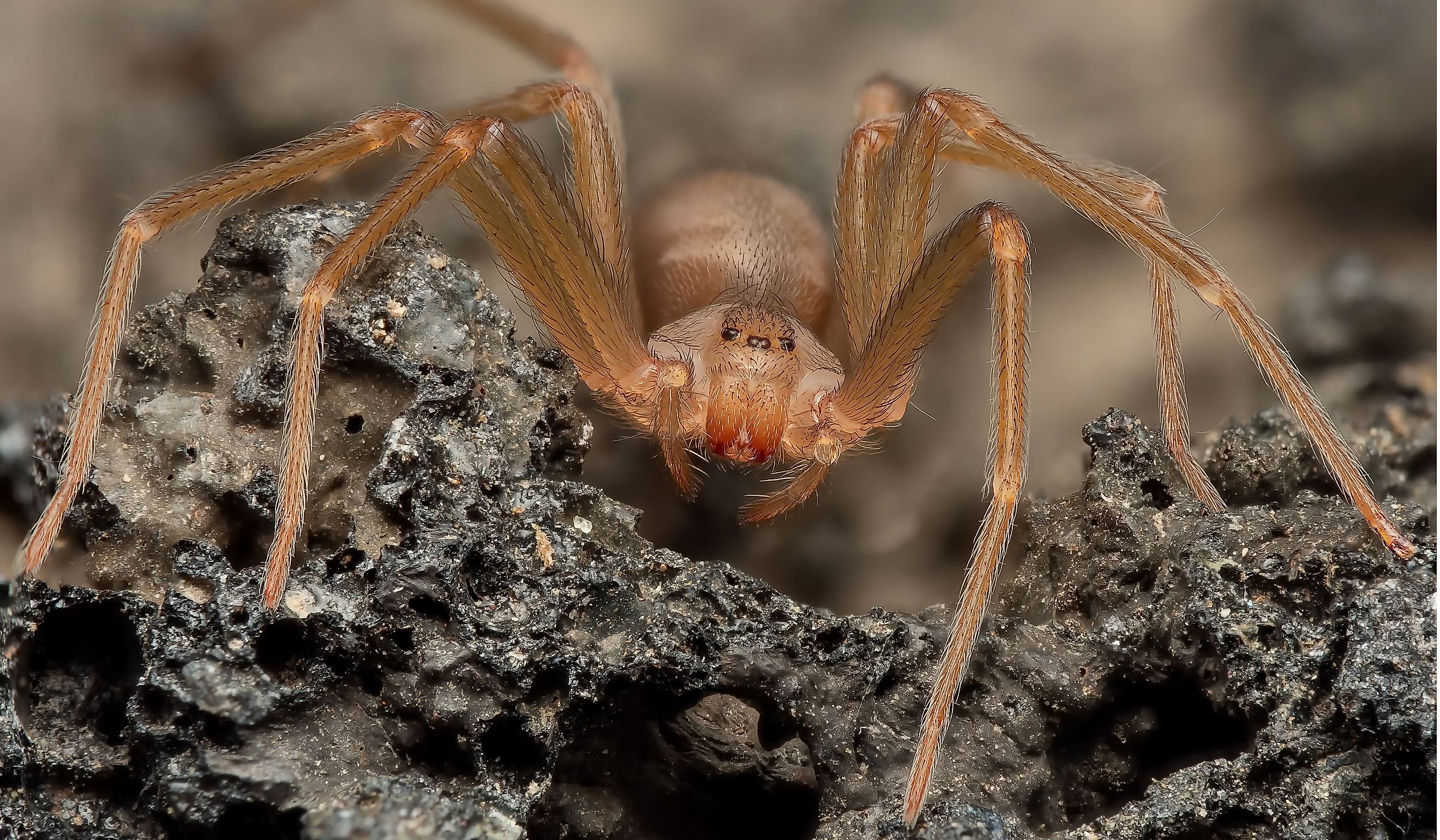
The 12 Deadliest Animals in Georgia
Georgia, located in the heart of the United States’ southern region, is home to far more than just peaches. While best known for its agriculture and the cultural mecca of Atlanta, Georgia, it also contains wild areas and more dangerous animals than you might think. Here’s our guide to the 12 deadliest animals in Georgia, as well as how to avoid them.
Eastern Diamondback Rattlesnake (Crotalus adamanteus)
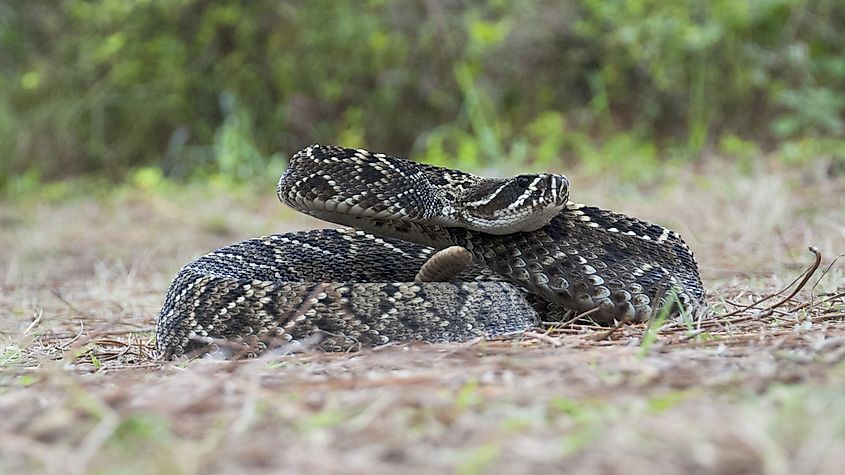
The Eastern Diamondback Rattlesnake, the largest species of rattlesnake, is a large, heavy-bodied snake covered in distinctive diamond patterns as well as a rattle. Typically found in the coastal plains, wetlands, and forests of the southern parts of Georgia, this snake is highly venomous. Its bites can cause severe tissue damage and, left untreated, can prove fatal. While relatively rare in the state, it’s still best to keep an eye out on hikes: always stay on the marked trails, wear hiking boots or other protective boots, and keep an eye out for the snakes around logs and rocks. Keep an ear out for the rattle, as well, to avoid the snake. If you do get bitten, seek medical attention immediately.
Cottonmouth/Water Moccasin (Agkistrodon piscivorus)
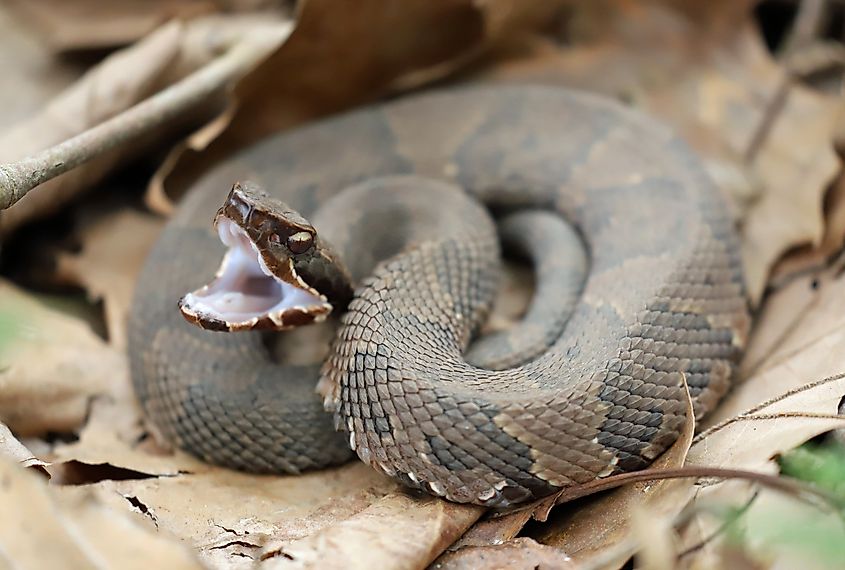
Georgia has a lot of snakes, and they’re not just on land. The Water Moccasin, sometimes known as the Cottonmouth, is a thick, water-swelling snake that prefers slithering through the swamps, marshes, and slow rivers of southern Georgia. Identified by the white lining around its mouth, the cottonmouth’s bite will cause pain, swelling, and destroy tissue. To keep away from this snake, avoid swimming in murky water where you can’t swim, and otherwise, watch for snakes basking in the sun on logs or rocks near the water. If bitten, seek medical attention immediately to mitigate any tissue damage that might occur: time is of the essence!
Brown Recluse Spider (Loxosceles reclusa)
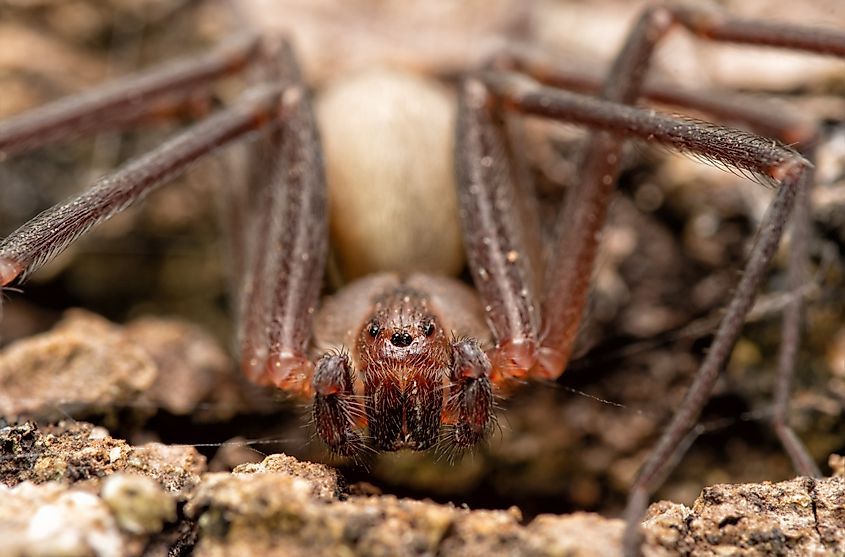
Danger can also come in the tiniest of packages: the brown recluse spider is one of the deadliest spiders in the U.S., and it’s found across Georgia in dark, undisturbed areas like basements, attics, woodpiles, and camping areas. Always check your tent very carefully for these spiders, as their venom can cause severe necrosis and shut down entire systems of your body with just one bite. Identified by a violin-shaped mark on its back, this small brown spider is best avoided by shaking out clothing and shoes before wearing them, as well as using thicker gloves when handling wood or debris. If bitten, seek immediate medical attention to save your life.
Black Widow Spider (Latrodectus mactans)
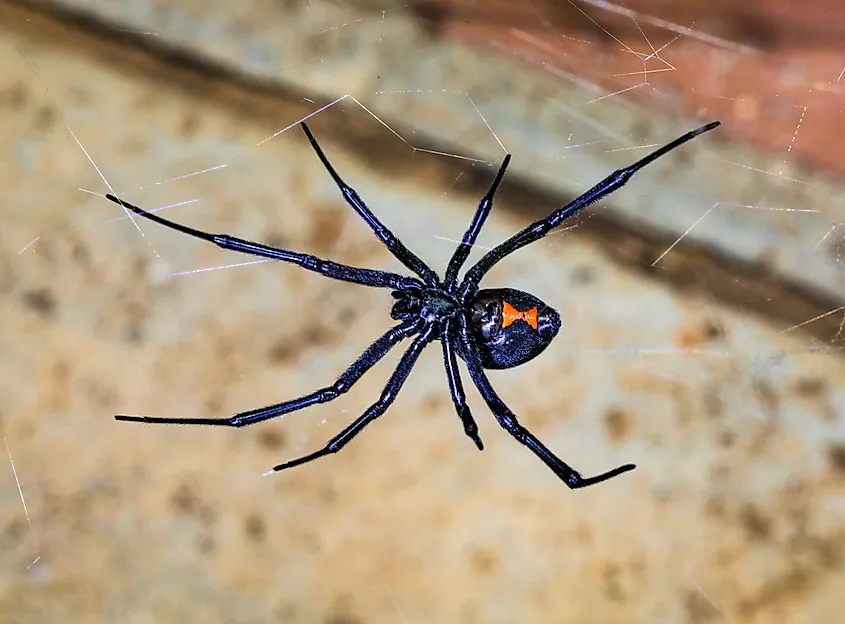
One of the more famous deadly spiders of Georgia, the black widow spider is also iconic in its markings: it’s a shiny black spider with a red hourglass marking on its abdomen that strikes fear in the heart of whoever encounters it. Like the brown recluse, the black widow is often found in woodpiles, sheds, garages, under rocks, and in wooded areas, and its bite packs a punch: the venom affects the nervous system, causing severe pain and muscle cramps. Stay away from black widows by checking and cleaning storage areas regularly, cleaning your tent of all debris before packing it up if camping, and wearing thick gloves while doing outdoor chores to ensure that bites won’t penetrate. If bitten, seek medical attention immediately.
Eastern Coral Snake (Micrurus fulvius)
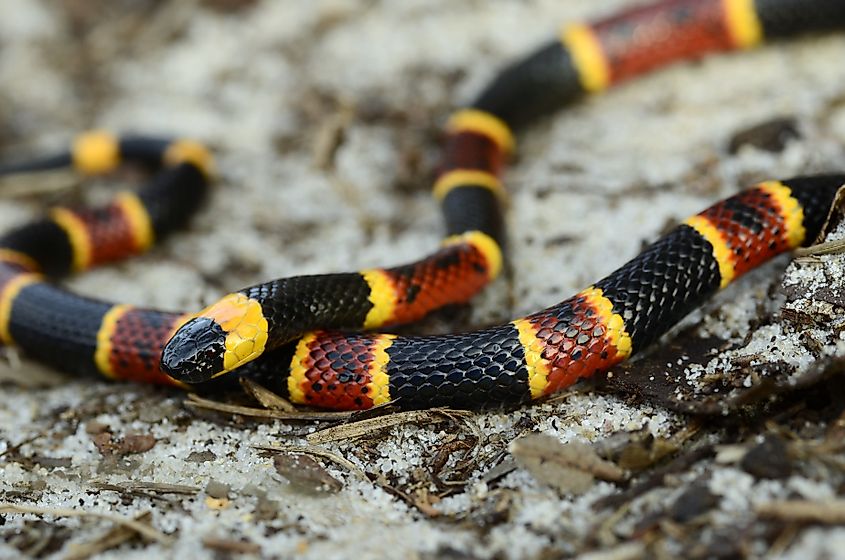
Memorize this: “If red touches yellow, you’re a dead fellow. If red touches black, you’re OK, Jack.” Once this is committed to the brain, you have nothing more to fear from the eastern coral snake, a highly venomous snake found in pine and scrub oak forests as well as sandy areas in Georgia. Occasionally also found in populated areas, this brightly colored snake with red, yellow, and black bands can shut down your respiratory system with its neurotoxic venom. The rhyme comes in handy to differentiate this deadly snake from a copycat: the scarlet king snake has a very similar pattern but, crucially, is not venomous, and the red portions touch black. Better yet, hedge your bets and simply avoid all brightly colored snakes!
Mosquitoes (various genera)
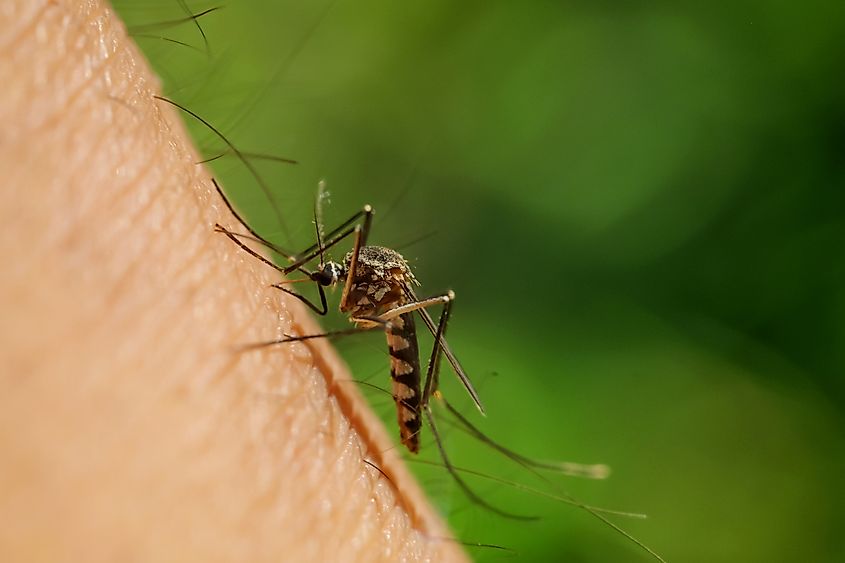
Who doesn’t know the irritating whine of a mosquito in the summertime? These small flying insects bite people all the time, but some species, like Edes aegypti and Culex pipiens, are also vectors for severe diseases like the West Nile virus, Zika Virus, and Eastern equine encephalitis (EEE). Further south, they also carry deadly diseases like malaria. The habitat of the mosquito depends on standing water like ponds to reproduce, so a great way to avoid mosquitos is to ensure that there is no standing water around your home: check flowerpots, tires, or anything that could hold a puddle’s worth of water. Prevent bites with insect repellent, and avoid being outside around dawn or dusk, which are peak flying times for these pests.
Fire Ants (Solenopsis invicta)
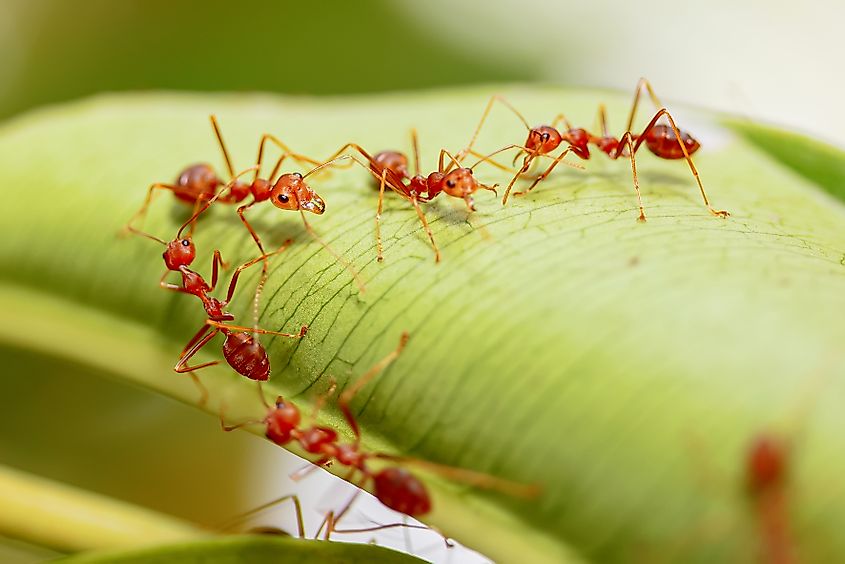
Far from a picnic annoyance, fire ants have bites that pack a punch: they cause painful, itchy bumps, and multiple stings can precipitate a severe allergic reaction to these dangerous ants. Identified by their reddish-brown coloring and aggressive behavior, fire ants will attack again and again (and again), particularly if their mounds are disturbed. Find them in lawns, gardens, and fields all across the south, from the heart of city parks to more remote areas. In your own lawn, be sure to apply pesticides to keep them away, and don’t walk barefoot. If you’re bitten, take antihistamines and seek medical attention if you show signs of a strong allergic reaction.
American Alligator (Alligator mississippiensis)

Not just found in Florida, the American alligator cruises the freshwater rivers, lakes, swamps, and marshes of southern Georgia, striking fear into the heart of anyone who encounters these long, toothy reptiles. Their powerful bites are their primary method of killing and can take a human out with their strength; if you see one, don’t go in the water. Keep away from the water’s edge and keep an eye on your pets, whose smaller stature makes them an ideal snack for a gator lurking just beyond the shore. Additionally, don’t provoke an alligator, and certainly don’t swim in areas known for their alligator population.
Timber Rattlesnake (Crotalus horridus)
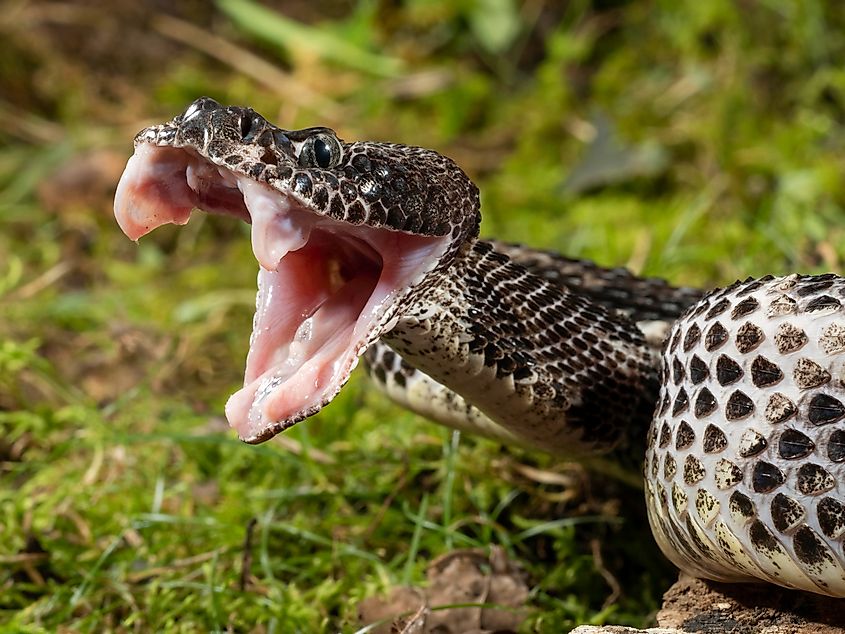
If you hear a rattle, turn around and walk away: this simple advice will keep you away from the potent venomous bite of the timber rattlesnake, a large snake with crossband patterns, and the rattle mentioned before. Slithering through the deciduous forests and rockier portions of Georgia, this reclusive snake doesn’t want to be found but will lash out if provoked. Its bites will cause tissue damage and severe pain, so be cautious in wooded areas, wear boots, and stick to the marked trail.
Ticks (various general)
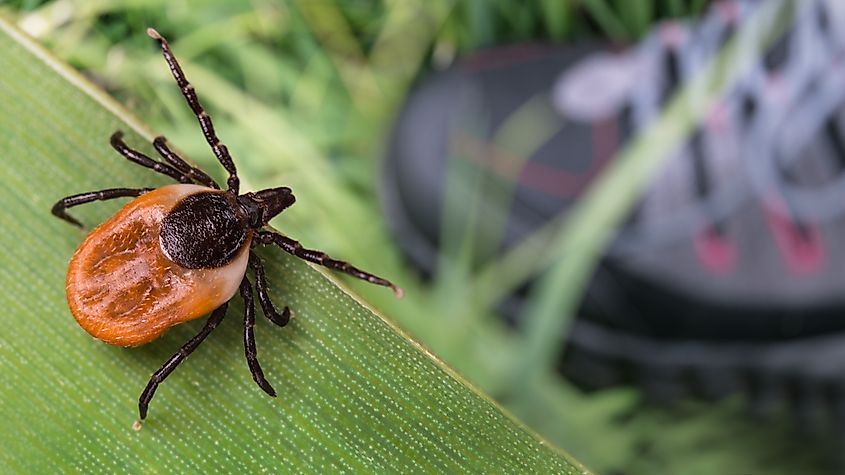
Like mosquitos, the tick bite isn’t what kills you but what they carry: ticks of many species, but especially Ixodes scapularis (Black-legged tick), are vectors for diseases no one wants. Lyme disease will cause a lifetime of chronic pain and arthritis; rocky mountain spotted fever can prove deadly, as can anaplasmosis, which primarily affects the liver. Ticks dwell in grassy areas as well as forests and will often cling to whatever brushes past the grass, so it’s important to wear long sleeves, pants, and protective boots, in addition to performing regular tick checks on your whole body after spending time outdoors. If you see the tell-tale “bull’s eye” of Lyme Disease, seek medical attention to treat the disease before it progresses.
Copperhead Snake (Agkistrodon contortrix)
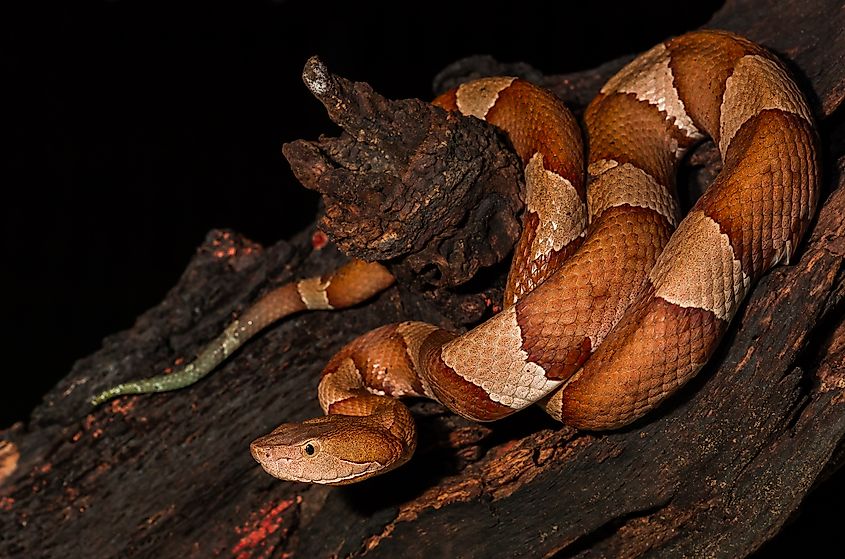
Known for its distinctive copper coloring on its head, the copperhead snake patrols the forests, rocky hillsides, and streams of Georgia. A medium-sized snake that can grow up to a meter long, its venomous bite can cause pain, nausea, throbbing, tingling, and swelling. That said, copperheads sometimes start with ‘dry bites,’ which are venomless. Nevertheless, it’s important to watch where you step and avoid dense underbrush, as its dark brown hourglass markings provide excellent camouflage for this snake. Copperhead bites are relatively common as the snake will freeze if it senses danger rather than slither away.
Wild Boars/Feral Hogs (Sus scrofa)
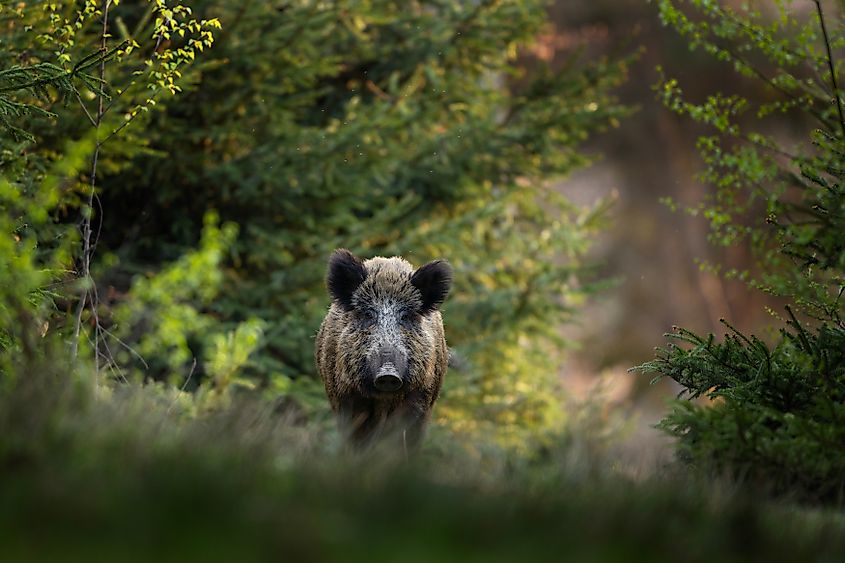
Far from the stuff of good barbecue, feral hogs are large, aggressive pigs with sharp tusks that can cause severe injury to anyone and anything they attack, as well as carrying diseases harmful to both humans and livestock. They are primarily forest-dwelling, though they also frequent swamps and agricultural areas in Georgia. If you see a wild boar, keep a safe distance, and avoid areas known for boar activity if you don’t have adequate protection and/or hunting equipment. These hogs travel in groups, known as sounders, in a matriarchal society. They are often vectors for worms, worm diseases like trichinosis, and even pseudorabies.
As you can see, the wilds of Georgia contain many dangerous creatures, but adequate preparation and careful attention will keep you safe. Always hike on the marked trail, avoid murky water, and most importantly, keep an eye out in front of you at all times to ensure you don’t step into the worst day of your life. These creatures are rarely aggressive initially, so you always have the chance to avoid them.











